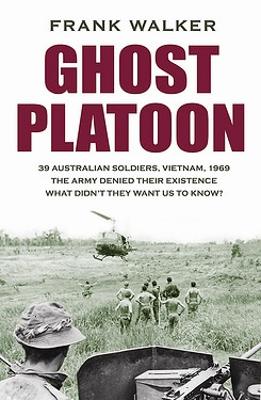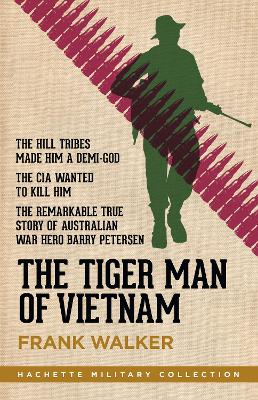Hachette Military Collection
2 total works
For 39 years the Australian Defence force strenuously denied a unit called the 2nd Defence and Employment platoon existed during the Vietnam war. The platoon was a makeshift rapid deployment force of 38 men, all regular troops, based at the Australian Task Force HQ at Nui Dat in 1969 from late April to June. The ragtag unit was thrown together with diggers left behind in Vietnam when their regiment returned to Australia. It was so slapdash it didn't even have an officer or sergeant in charge. However, a rugged ex-Royal Marine stepped forward to take the lead. Jim Riddle was 10 years older than most of the young diggers and only an acting corporal as he'd been in too many bar fights and insulted too many officers to keep his stripes but he knew enough of war to keep these young diggers alive.
The young Aussies respected Riddle and his battle experience. When the platoon was thrown into one of the biggest firefights of the Vietnam War against hundreds of enemy, Riddle proved his leadership, bringing all his men through unscathed and leaving a battlefield scattered with bodies. It was a highly successful operation but immediately afterwards Riddle's platoon was mysteriously disbanded, the team broken up and scattered throughout the army. There were no official records and it was as hough the platoon never existed. It was a Ghost Platoon. Something happened at that ambush that compelled the army to bury the platoon's existence and the secrets that went with it.
Three decades later the men of the platoon set out to prove teir unit had existed. They ran into bureacratic brick walls and official denials from the tp brass and official historians. What's more, the army strongly denied darker deeds done after the fighting, deeds which some of the men allege were war crime atrocities. Proving their unit existed required diligent detective work until they broke through and beat the system. After an investigation the government finally acknowledged the unit had existed and praised the brave leadership of Jim Riddle but the long battle caused immense psychological damage to the veterans. They'd fought for their country but then had to fight their own country.
Frank Walker traces what happened to the men of the Ghost Platoon, the impact the war had on them and their long battle to prove their unit existed. His findings are a shocking indictment of the long term effects of war: a private who murdered his senior officer still doesn't know why he did it; some are still afraid to speak 40 years after the war; veterans of the platoon alleging they have been beaten up for speaking out; and there are still demands for a Royal Commission.
This is the story of the men of The Ghost Platoon
In 1963, 28-year-old Australian Captain Barry Petersen was sent to Vietnam as part of the 30-man Australian Training Team, two years before the first official Australian troops arrived. Seconded to the CIA, he was sent to the remote Central Highlands to build an anti-communist guerrilla force among the indigenous Montagnard people. He was sent off with bagloads of cash and a vague instruction to 'get to know the natives'. Petersen took over the running of the paramilitary force that had been started by the local police chief and started to earn the Montagnards respect. He lived drank and ate with the Montagnards, learned their language and respected their skills.
The Vietcong dubbed Petersen's force 'Tiger Men'. When Petersen he heard this, he had special badges made for their berets and supplied tiger print uniforms. The Montagnards loved Petersen and flocked to join his force but the CIA were worried. They thought he was out of control and too close to the Montagnard people...

